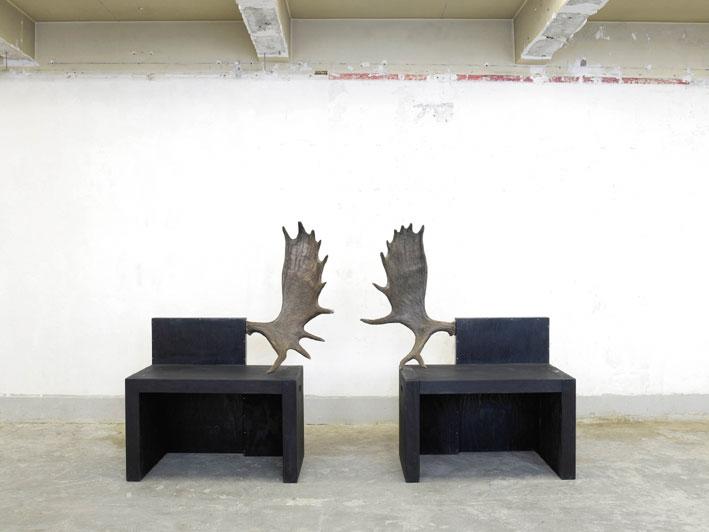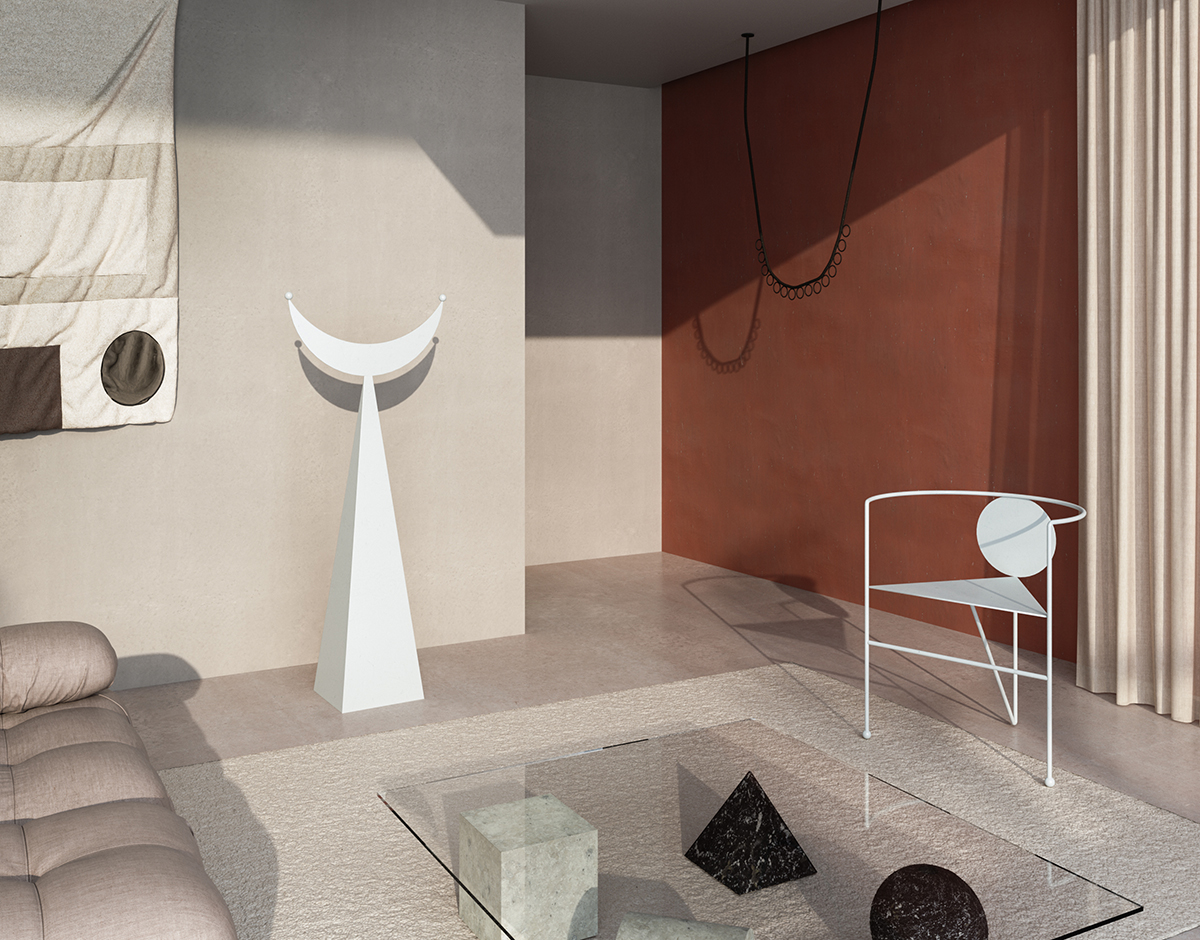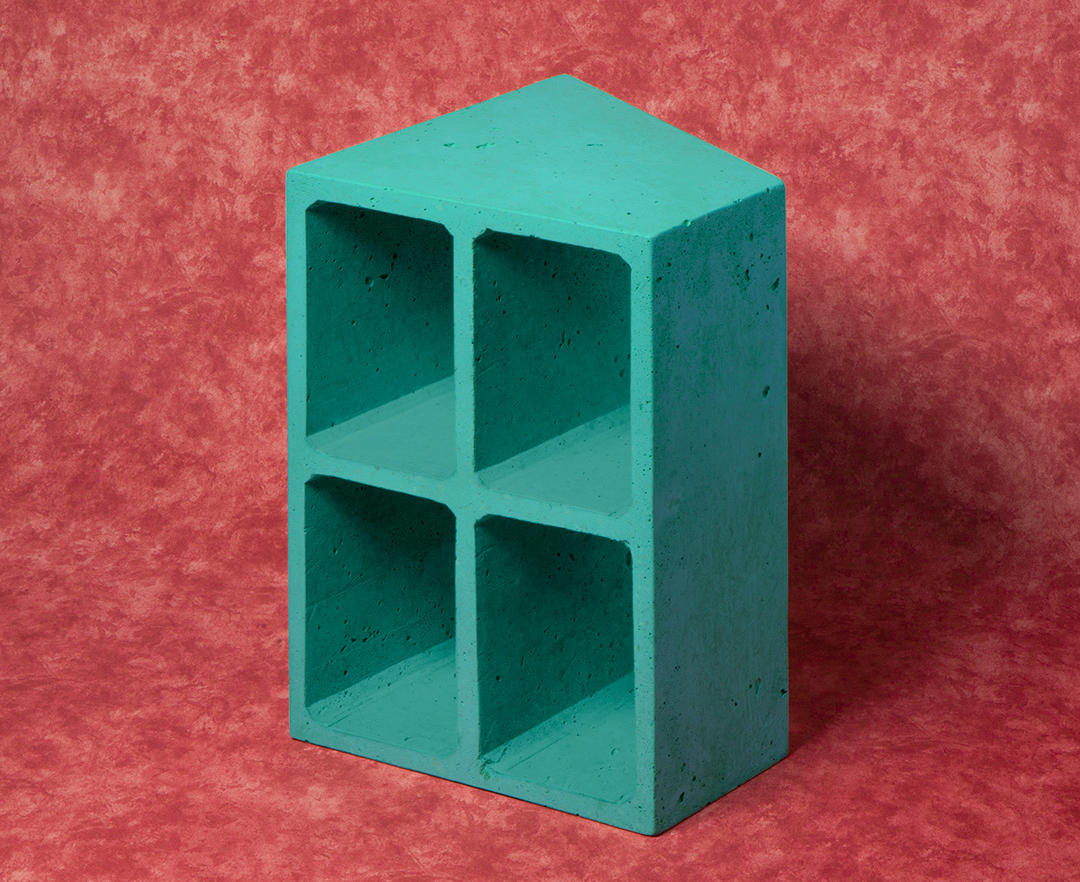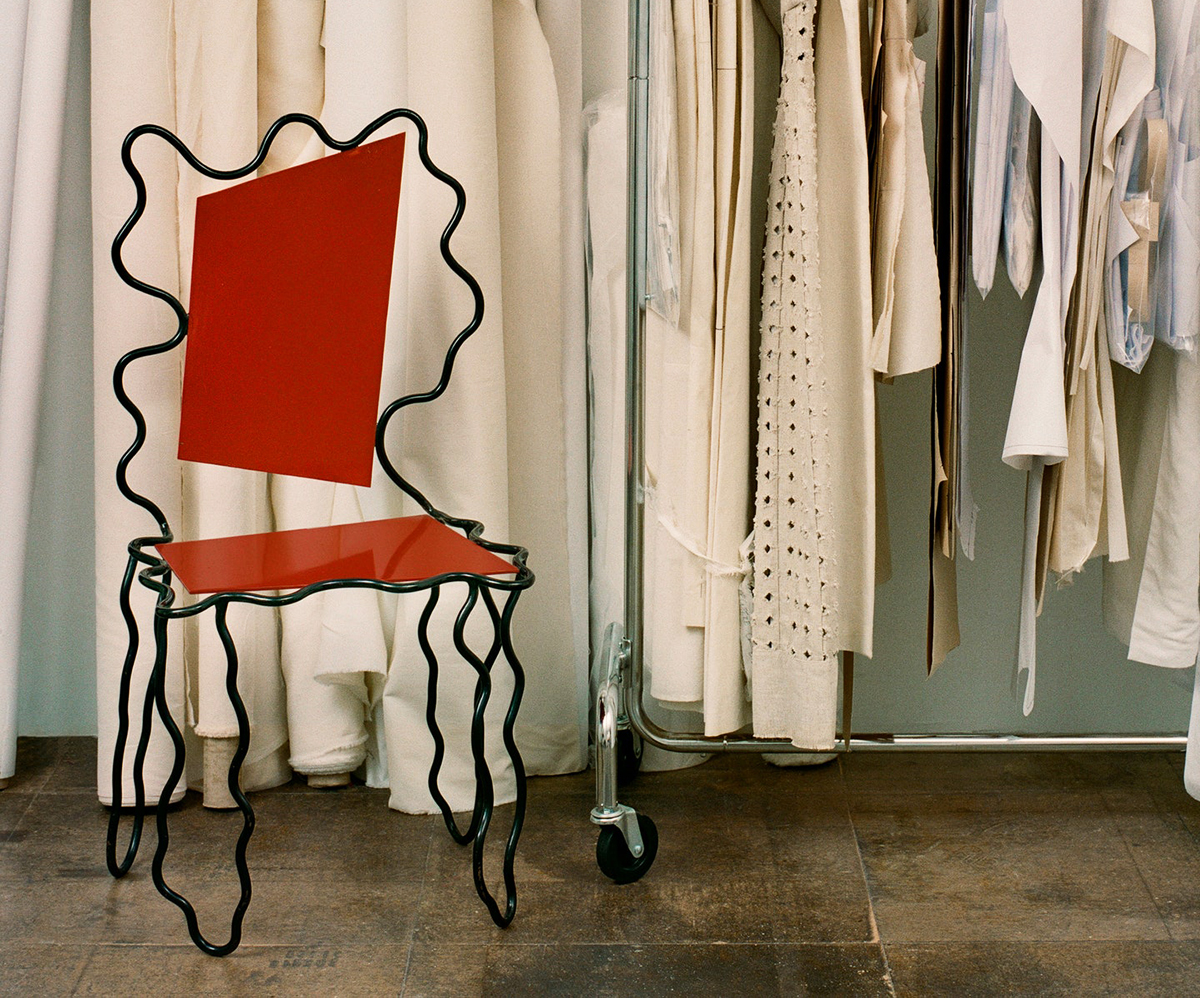
04.11.23
Current Obsession
Meet the 1980s-Era Designer Whose Chair Went Semi-Viral During the Pandemic
The impulse to reassess design from the late ’70s and ’80s — and to place it in a current context — has clearly been in the air, most notably at last year’s Return to Downtown group show from Superhouse and Magen H Gallery and at the more recent Blurring the Timeline show, also at Superhouse. Standout pieces from both exhibitions included chairs by a designer whose name you might not be familiar with: Howard Meister. Meister was part of the core group of designer-artists at Art et Industrie, a now-legendary New York gallery, which opened in 1977 and closed in the late ’90s. Rick Kaufmann, who founded the gallery with Tracy Rust, commissioned artists to make functional pieces — art furniture, essentially, before that was an endlessly debated category — blending art and design at a time when the two were considered in opposition to each other.
For someone who wishes they could’ve been around for that fabled downtown New York scene, talking with Meister evokes an era when the city was a crucible for inventiveness in so many art forms, including design. (And when living in a loft in Manhattan was affordable). But if this kind of conversation elicits a wistfulness for a time past, it’s not empty nostalgia. Sometimes looking back gives you a sense of possibility, of what could still be, and what might return in a somewhat refreshed, reconsidered form. To create something, says Meister, is life-affirming, a “way of saying yes to the world.” As Meister’s pieces combine a playfulness and a seriousness of purpose, they capture their moment but also have lasting impact; of Meister’s chairs that have recently resurfaced, one is made from a bright red, painted steel seat whose back rises in three jagged peaks; another is a black painted steel form that looks straight and simple enough except for the serrated crack running through its center; and a third is made from red trapezoidal steel planes, connected by a squiggly black outline. Lasting impact? That third one went semi-viral in 2021 when it was included in the Parisian offices of French fashion designer Jacquemus.
Over a hundred publications have featured Meister’s work and his furniture is in the permanent collections of the Metropolitan Museum of Art, the Museum of Art and Design, the Brooklyn Museum, the Queens Museum, the Art Institute of Chicago, the RISD Museum, the Victoria and Albert, and the Montreal Museum of Fine Arts. And yet he remains relatively unknown to a nascent generation of designers. We caught up with Meister from his home in Western Massachusetts, where he continues to work, though his artistic focus these days has shifted from furniture to digitally manipulated photography. In a roving, entertaining interview, he shared with us how he got his largely accidental start and went from being “a dope in a suit” to an artist, his belief in the importance of craft and desire not to be “survived by crap,” his process, and more.
ALL PHOTOS BY LUIS CORZO, COURTESY OF SUPERHOUSE, UNLESS OTHERWISE CREDITED
TOP IMAGE FROM VOGUE FRANCE, PHOTOGRAPHED BY JULIEN T HAMON, SET DESIGN BY TILL DUCA AND SAMUEL BEGIS, STYLING BY SOPHIE PINET
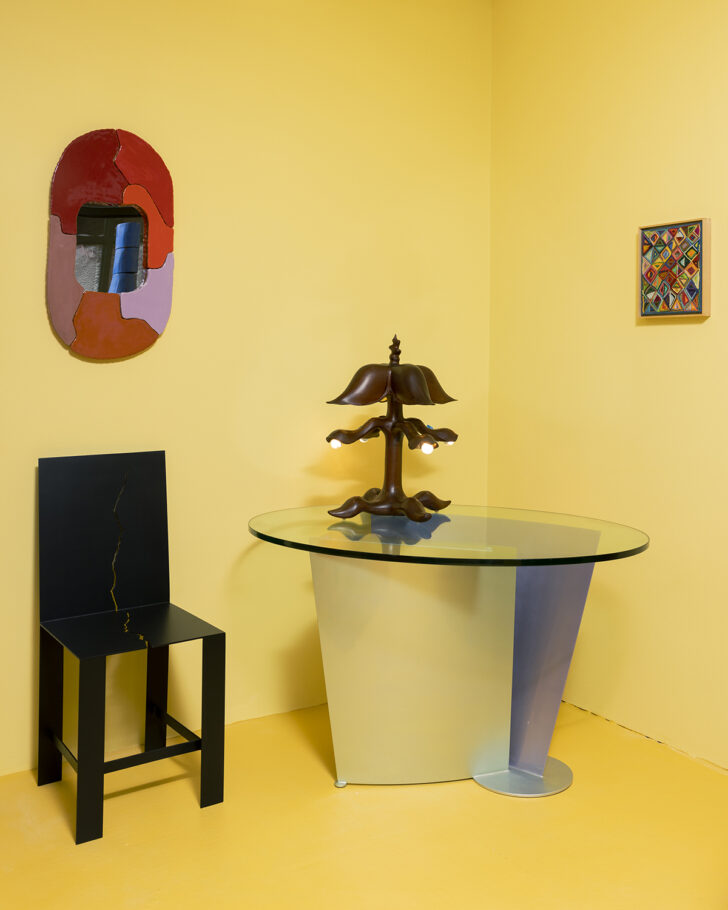
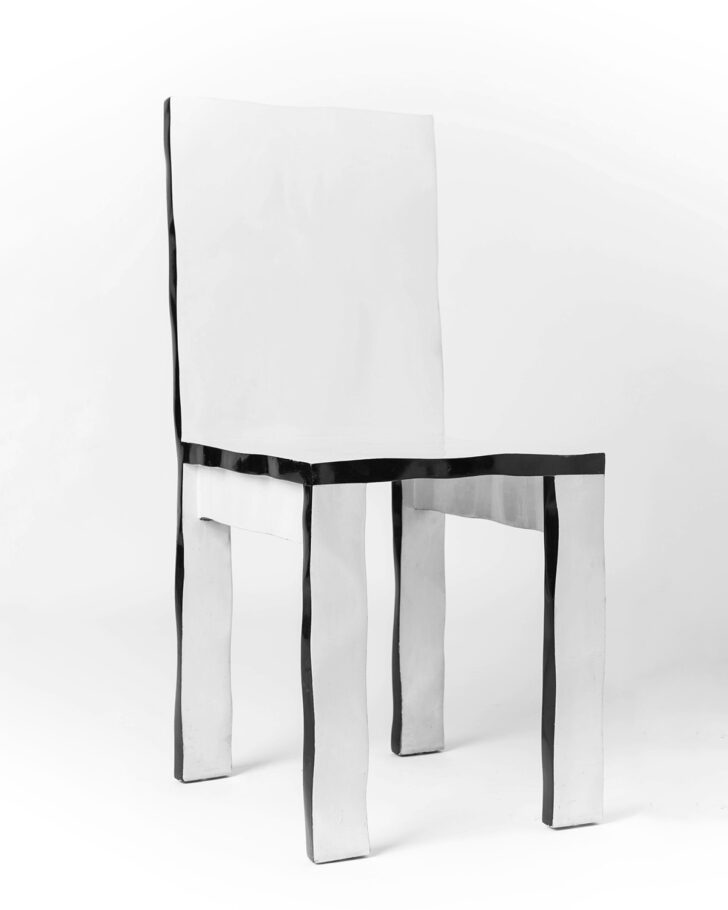
© Magen H Gallery
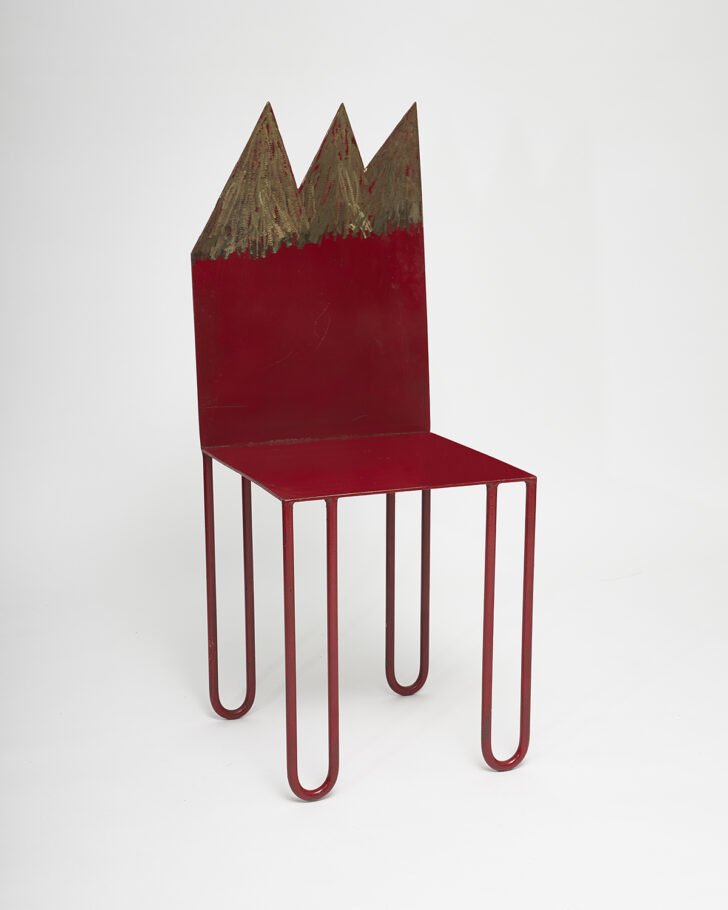
You’re a fourth-generation furniture maker. Did you grow up learning about design and making furniture? Was it always something you had an interest in?
I grew up in a family that manufactured furniture in North Carolina factories, but we weren’t a very design-y company. We weren’t doing anything cutting edge or identifiably specific to ourselves. I had no intentions of ever being a designer, so I am a fourth-generation furniture maker but the design thing happened by mistake.
How so?
I was supposed to take over the company, and I was going from job to job within the company to learn how to do what we did. We made 300,000 chairs a year and there were a lot of employees and departments for me to try. One lunch hour, I was flipping through a copy of Casa Vogue magazine (this is like 1979) and I saw these pictures of tables by Ettore Sottsass. I had no design background at all. My background is in the Classics. I’d never been to art school or anything like that. But I saw these pictures and went, Wow, you mean a table or chair could look like anything I want? It doesn’t have to look like Hepplewhite or Chippendale? Which sounds stupidly obvious, but I had no background in design and hadn’t given it a second thought.
In 1979, modern, contemporary furniture meant stuff that was designed during the Bauhaus and in the 1950s. It was Charles and Ray Eames, it was Le Corbusier. Beautiful things, but that was the established modern canon. I didn’t think about it much. Then I saw these things and went, whoa, this could be a lot more entertaining than it’s been so far. So, I drew four chairs. Just made quick prospective sketches and I showed them to my family who ran the company, my uncle, my aunt, my father. They hated them! So I said, well, they don’t get it.
What I did was — and you have to realize how crazy this is — when I said we made 300,000 chairs a year, we had sample makers, great cabinet builders, and I hired this lunatic starving artist in Manhattan who I met at a karate school who needed the money, to make these four chairs. So, I’m paying someone out of pocket to handmake these chairs in Manhattan when we have 800 people employed in factories in North Carolina, but I can’t use them because I’m the new kid in the company and everybody else hates this stuff. I figured, I’ll build these first four chairs and I’ll have them photographed and I’ll show them to my family and then they’ll get it. I spend a lot of my money getting them photographed by real pros, they look like a million damn dollars, I put these four photographs with a brief description on [my family’s] desks and they hate them.
So, I put them in my briefcase. I had my little suit on and during my lunch hour I went down to Soho. I figured I’ll just show them to galleries until somebody says something. I walked into Art et Industrie and I didn’t even know that they existed. When I tell you that my career as an artist happened by mistake, I’m telling you the truth. I showed them to the guy who was running the store that day and his brain exploded. He couldn’t believe it. He called the owner, so Rick [Kaufmann] comes down there and he looks at these things and he asks are they models or are they real chairs? I say no, no they’re real chairs, you can sit on them. Where are they? he asks. Well, they’re in Brooklyn. He makes a face, you know, because it’s like hipness central and here’s this dope in a suit. I had no idea. I was 26 years old and completely naïve about all of this stuff. Anyway, he deigns to get into a taxicab and go out to Brooklyn and looks at these four chairs and goes, Oh I love them, I’ve gotta have them.
So I figure this is great, now I’m in this Soho gallery. This was 1980, we’re talking about West Broadway and Spring Street with this big ground floor space. It couldn’t have been any hipper. Now my family is gonna get it. This guy who owes me nothing, who’s never met me before, with this fancy-shmancy gallery, he wants them and two of them are in the window and the other two are inside, so of course I show my family pictures and they still hate them! They couldn’t care less. And they’re pissed off because obviously it’s taking me away from my actual job. This is getting worse and worse and worse!
Those first four chairs are really photogenic, and Rick is a great promoter, so within six months I had 50 or 60 pages of editorial coverage. The New York Times — my family believes in the New York Times and everybody in the office got a copy of the Times on their desk in the morning and so when my stuff got into the Times I figured this is the best thing in the world, this has to be the day! I’m not going to say anything, they’re going to simply turn to the design section of the Times and there it is. So they turn to the design section of the Times and they’re just angrier and they don’t like it and they don’t want to talk about it.
At the time, one half of my family was buying the firm from the other half and I was on the half that was getting bought out. As this is all happening, Rick calls me down to the gallery and says, how would you like a one-man show? I’m thinking Christ, where am I gonna get the money to build 25 pieces? But at that point my family’s company gets sold and I get a check big enough for one year’s salary and I say I’m gonna roll the dice. I’m gonna spend that money building this show and if it doesn’t work, I’ll get a nice normal job somewhere and I’ll have had a good time. And if it does work… Having a one-man show in 1982 at West Broadway and Spring Street was an incredible experience.
Until Rick offered me a one-man show I really wasn’t going after this thing. When I first started doing this, I thought I had a dozen cool pieces in me somewhere and that I would do those dozen pieces. It turned out that was false and I did this for 30 years. I made a couple of hundred pieces and things started to make more sense. A kind of path for my own designs started to make itself apparent as I worked on this. But then I did get to the point, in 2014, where I made a chair that, to me, wrapped up what I was doing. I began with these loud, radical furniture designs kind of in the manner of Studio Alchimia [the Italian avant-garde collective of designer-theorists founded by Alessandro Guerriero, a forerunner of the Memphis Group] because that’s what I had seen in Casa Vogue and Wet Magazine, but my work got quieter and quieter, more serious, I think, and then I finally got to an end in this trajectory. Which I only ever felt barely in control of. I mean, I knew what I wanted to do, I was very much in control of what I was going to make or not make, I’m a very deliberate guy.
There’s basically two ways you can build stuff, whether it’s sculpture or furniture and they’re both legitimate ways. You can go in the shop and just start putting stuff together, oh this is nice, that’s interesting, have a cigarette, look at it again and go, Ahh. I know people who do work like that. I can’t do that. If I walk into a shop with bunches of steel and wood, they don’t say a word to me. I don’t get messages from trees, like George Nakashima. I’m a very different kind of guy, I would be lying in bed at three o’clock in the morning with the TV on and not really watching it and an image would float into my brain, of a chair or a table or something and I would grab a piece of cheap typing paper and a pen and just make a prospective sketch to get the idea down. Then I would refine that and make a working drawing so I knew what the measurements were. I would get the material, almost always steel, and then draw directly on the steel with chalk, and then torch-cut it. In other words, it was a very deliberate, step-by-step kind of thing. It always began with an idea for an image.
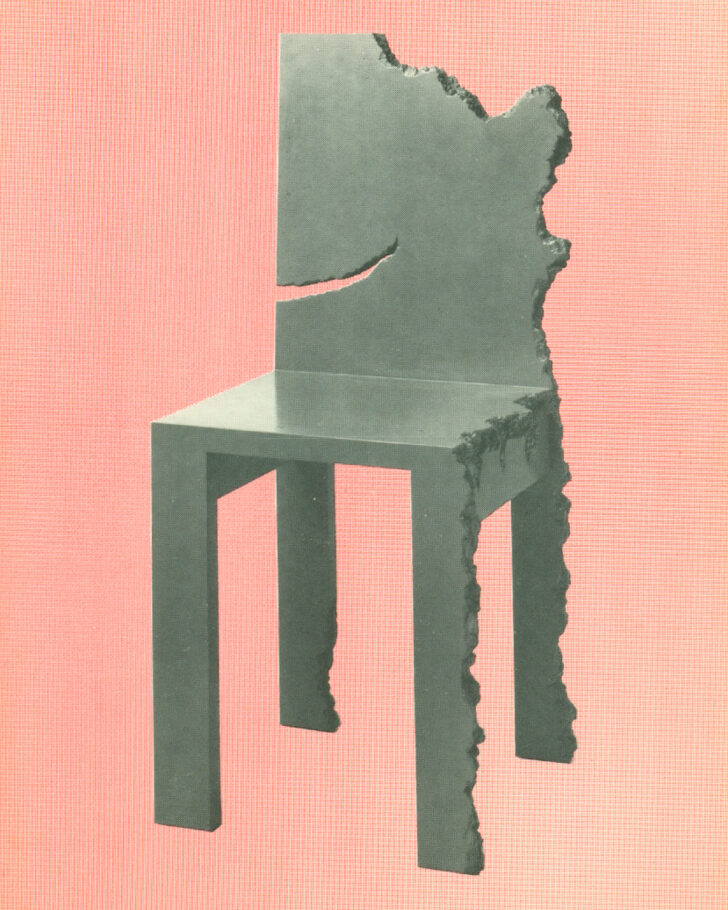
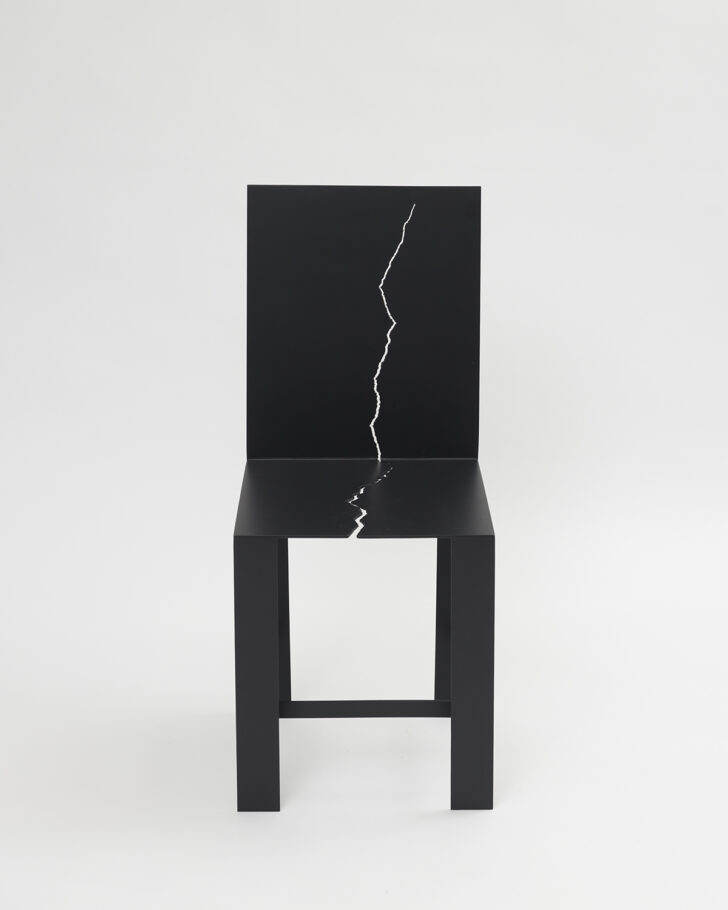
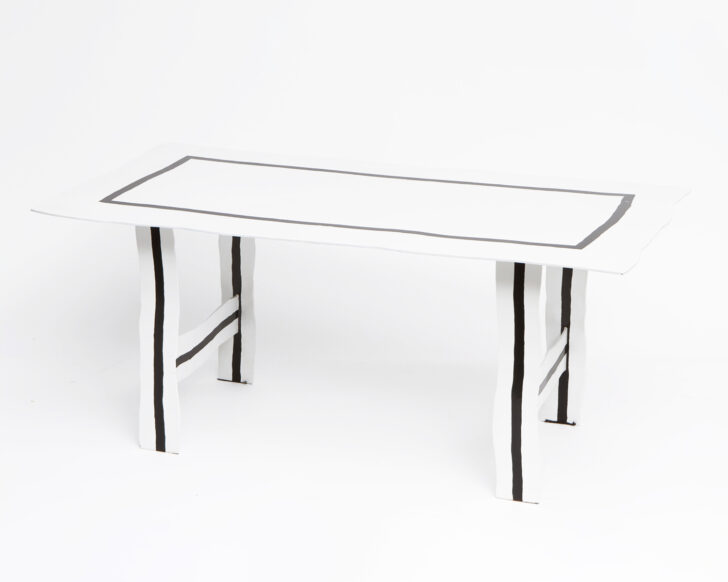
© Magen H Gallery
I read that you like to “design backwards.” Is that essentially what you were doing?
I may have said that! I guess that’s backwards. The thing is, having never gone to design school I didn’t know how hard it was to design chairs. In my family, we made chairs every damn day. It was no big deal. I never knew that they were these special objects, so I just did it. So that’s backwards. The design community loved the way they looked but they thought they were art. They continually classified them as art and the art community said yeah these are art objects. But people bought them and put them into their homes.
And they were fully functional.
Yes. There are many different types of chairs, from the extreme of lounge chairs to what are called occasional chairs or ballroom chairs where you’re supposed to be able to perch on them for a short period of time but you wouldn’t sit down and read a book on them. And precious chairs, that are delicate and status-y in one way or another, have a very long tradition in furniture-making. The first chairs were thrones. Being fourth generation and being a Classics guy, I realized that I was participating in a long tradition that had history and roots and rules and masters and I needed to learn something about that.
So, I looked into all these things along the way. In the ’90s and late ’80s at Art et Industrie, I would always include one piece from the traditional canons of design that I had reworked in my own manner. I would take a chair out of the history of furniture design and run it through my aesthetic but it’s going to look like it belongs in that family of chairs. Though I started with these really wacky chairs based on the freedom that Sottsass and those guys had, that loud, nutty, jaggedy hot pink–and-green kind of Alchimia vocabulary, it wasn’t my own. Little by little, what I was doing became more introspective and I think I became increasingly serious about it.
You mentioned you were on this trajectory that came to an end in 2014. Beyond finding your own voice or vision, how would you describe that trajectory?
The most interesting thing, I think, in my furniture work was the chairs. I made tables and cabinets and lamps but really it was chairs, from the first four pieces. What Rick wanted in the gallery was chairs because nobody was making chairs. I always wanted to do chairs for a number of reasons: because of their position as cultural objects, because of my own family’s tradition, because they’re the most advanced piece of furniture when it comes to design difficulty and solving problems, and most important, because they hold your body when you use them. They’re built like your body – they have legs, they have a seat, they have a back. Even the vocabulary is the same one we use for our bodies. Not only do they support you, but they can stand in almost as a model for a person. I could treat a chair almost like a self-portrait. These weren’t deliberate self-portraits or portraits of people I know, but that’s how I thought about them.
My designs are very simple. By the time you get into the late ’80s, when I knew what I was doing, there’s never an extra anything. I want the pieces to be as strong as they can be visually, and to get an idea across really strongly, you have to say one thing at a time. That’s the way I design and build furniture.
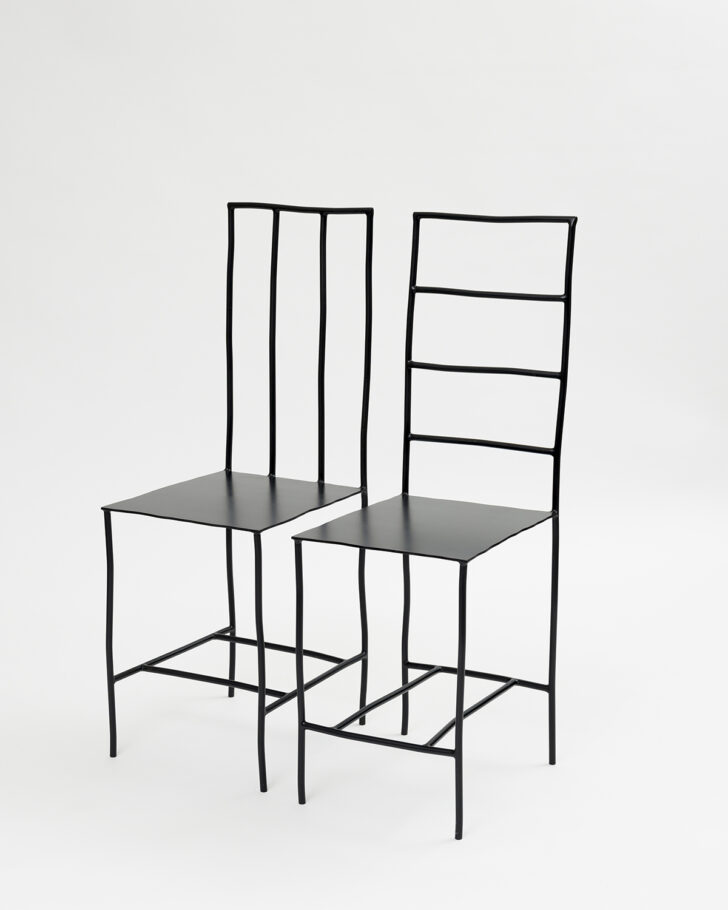
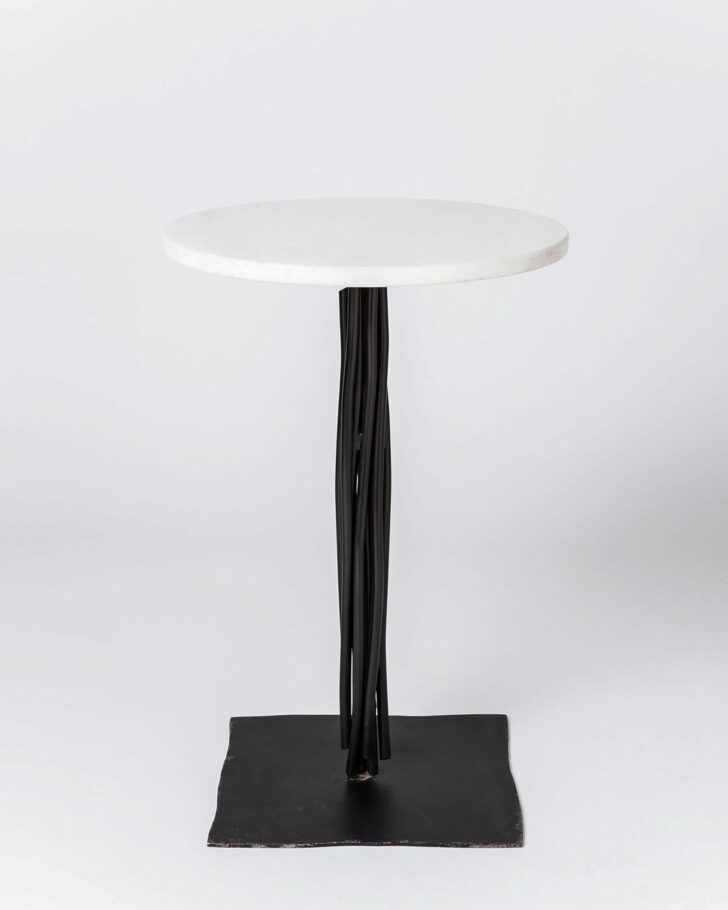
© Magen H Gallery
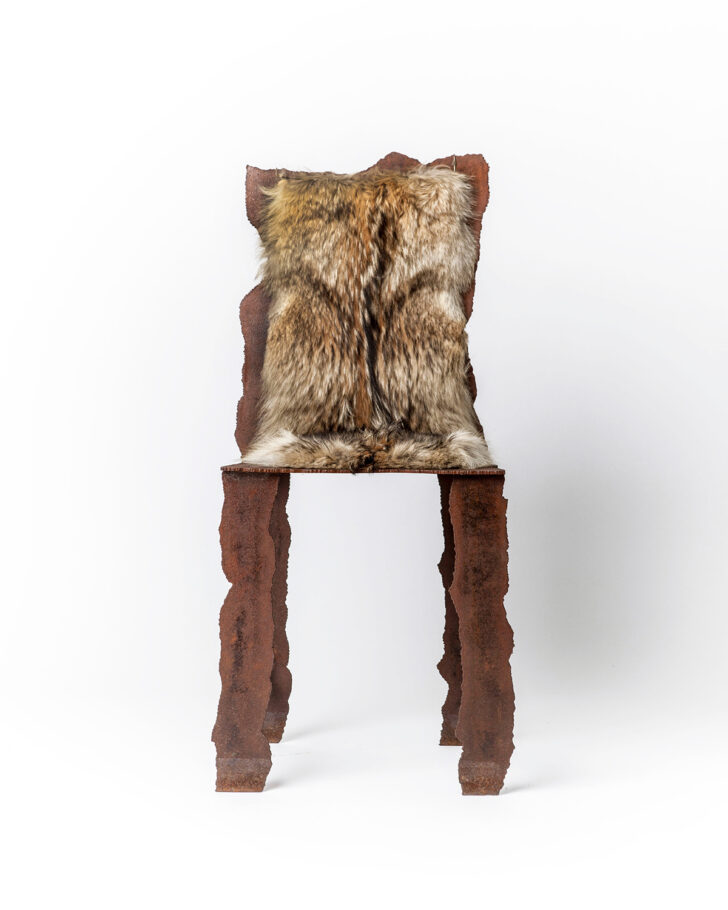
© Magen H Gallery
How did you know you’d come to the end?
I got to the end of this thing because I started with these ways of damaging and demolishing what our expectations for a chair are. My chairs had cracks in them that made it look like you couldn’t sit on them, but you could. They were crumbling away, they were jagged and inhospitable and hostile-looking, really. It was: How can I take this thing and then deny it at the same time and make it still useful. It was an interesting challenge but after a while I started to get more comfortable with the idea that I was an artist, actually, and not an imposter and there were things I really wanted to say. At the same time I started moving into digital photography. Photographs, of course, are much more literal, they’re much more attached to their subject than the things I was doing to chairs. As I became more confident in what I wanted to say, I wanted to work in a medium that would allow me to be more specific in what I was doing.
And I had made hundreds of chairs and tables and it’s very physically demanding work. The majority are made of steel and working and bending steel, welding it and grinding it and painting it. It’s hard work and I did it for 30 years.
It ended in 2014 with a chair made out of aluminum that is the same minimal chair shape that I started with and never let go of except it’s perfect — nothing about it is eroded or broken or burned or crushed or decomposing or threatening. It’s in this shimmering sanded aluminum finish that picks up the colors of whatever’s around it, I have one in my living room. As the sun sets or the seasons change it shimmers slightly different colors. To me, this was the ideal chair. That’s it.
The thing that I do, whether they’re calling it design or calling it art, is to try to make the most interesting thing I can. That’s true whether I’m working on a chair or a table or a photograph. I know I’m done when I can’t think of anything more interesting to do to it. No matter what else they say about it, that’s all any of us artists really do. And then if you’ve been doing this as long as I have, you look back over 30 or 40 years and [you can] see oh, that was a good one. But along the way when I was making these chairs and having one man shows every year, I would be working to impress the other guys at the gallery. When I knew I had something hot, I would go: Wait until Frosty gets a look at this! Or: Terry’s gonna go, Fuck me, why didn’t I think of that? [Ed note: Forrest “Frosty” Myers and Terence Main also showed at Art et Industrie]. And those were the guys I wanted to impress, having given up on my family members. [Laughs].
So when Art et Industrie came to an end in the ’90s, did that community disappear for you? Or was it still going on in some other form?
It did, but it died a kind of slow death. The gallery really closed in 1997 and then in 2003 or 2004, Hugues Magen took over representing some of us — me, Frosty, Terry. Rick made that introduction. But what also happened is that I moved out of the city. We had a loft on 24th and Sixth Avenue when you could buy a loft for pennies practically. We lived there for 25 years, raised our daughter. My wife and I were turning 50 and wanted to do something different, so we sold the place in Manhattan and bought this place up here in Western Massachusetts. I had a lifestyle that was: wander around and look at work in galleries and have a coffee somewhere and go down to the gallery and chat with Rick and see who walks in and go out for drinks. It was very nice. But that all disappeared when the gallery disappeared. There used to be an opening every month so once a month there was a big party and everybody went. It was a great time. I came out of this totally straight business world into the art world of Soho in 1980. It couldn’t have been a more fun time. We were doing something that really put a thumb in the eye of traditional interior design people, indirectly saying: You’re a fossil. [Laughs].
I think that craftsmanship is a measure of character, and that the pursuit of craftsmanship — the actual labor involved — shapes our character. Improves it. Clarifies it. Our work creates us.
How do you feel about the renewed interest in this work from that time? When you were in it, were you thinking about posterity or thinking about it in any long-term way?
Yes, but not in the sense that you mean, I think. I know when I build in aluminum and bronze and stainless steel, that it’s going to be around a very long time. And I knew when the work started being collected by museums, as it has been, and serious collections that look after the work, and when it was being published in books and taught in design schools like RISD and Parsons, that I was doing stuff that was gonna be around a long time. And that whatever I did was going to be a reflection of me for a very long term. For that reason alone, you have to take what you’re doing seriously. It means you have to have a certain level of craftsmanship. I don’t want to be survived by crap.
Mark Rothko once said that to make a thing is an affirmation of existence. He was giving a lecture somewhere, maybe at Pratt. It’s that idea that when you make a thing, you are participating in the world, you’re saying yes to the world in a way, and that these things are made out of steel and bronze and they’re gonna be around really long time and that they’re gonna speak about me, even when they’re brand new they speak about me — I took it very seriously.
I’m sure you’ve noticed the similar terms we use to talk about design and ethics, art and morality. Words like: upright, integrity, parsimony, harmony, honesty, simplicity. I think that the limit of our craftsmanship is the limit of our ability to express our ideas with clarity and precision. In other words, art depends upon craft to be able to express. So, I think that craftsmanship is a measure of character, and that the pursuit of craftsmanship — the actual labor involved — shapes our character. Improves it. Clarifies it. Our work creates us.
I come from a long line of builders and makers of things. My father was a first-rate craftsman. Making something that was shoddy was not an acceptable idea. In fact, my chairs are finished on the underside of the seat. Nobody does that. Maybe Wendell Castle did. I didn’t always do as many coats and refine it quite as much but if you flip my chairs over, they look nice.
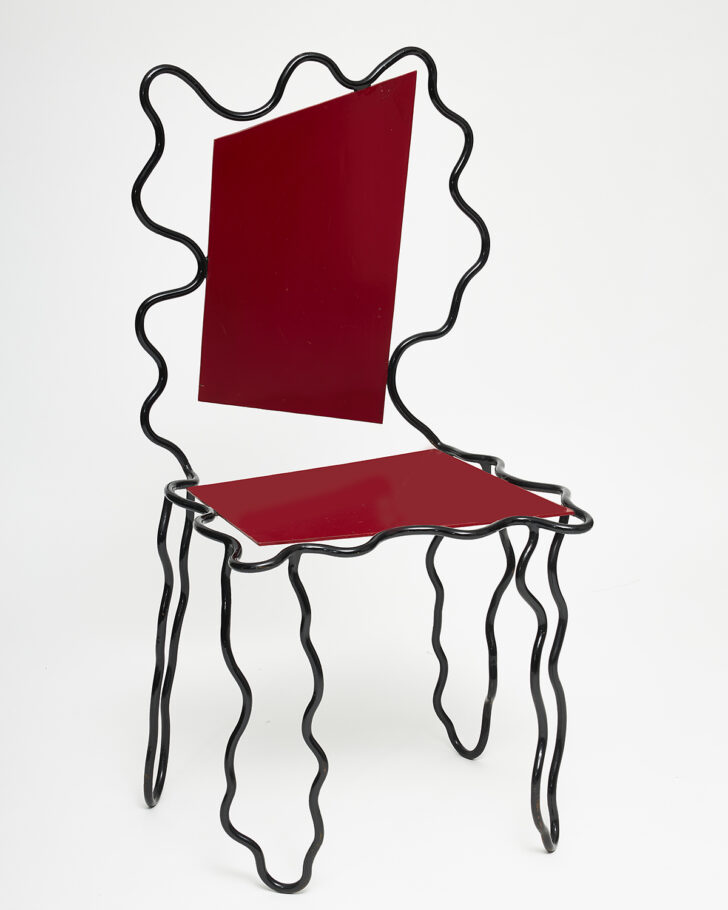
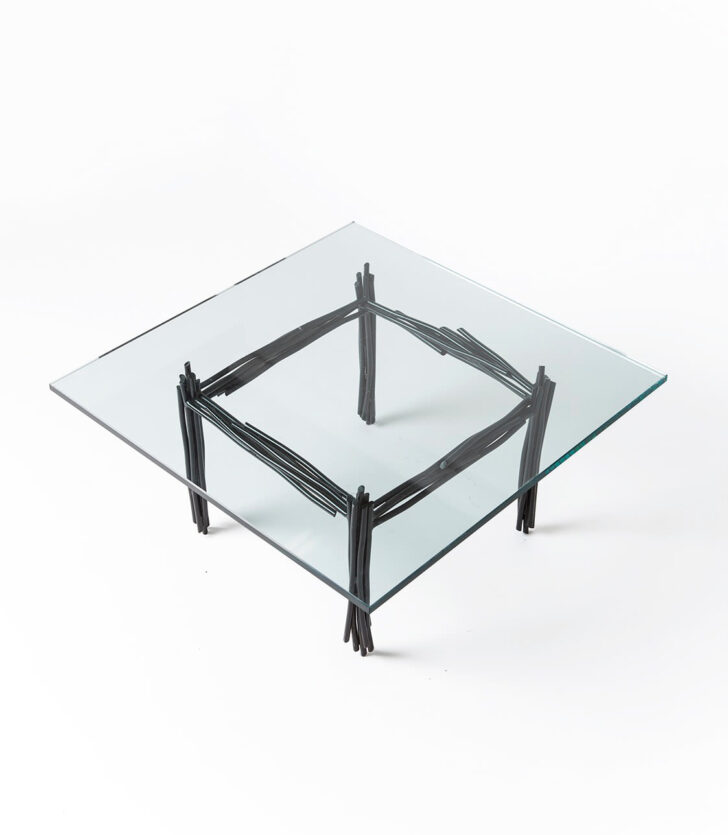
© Magen H Gallery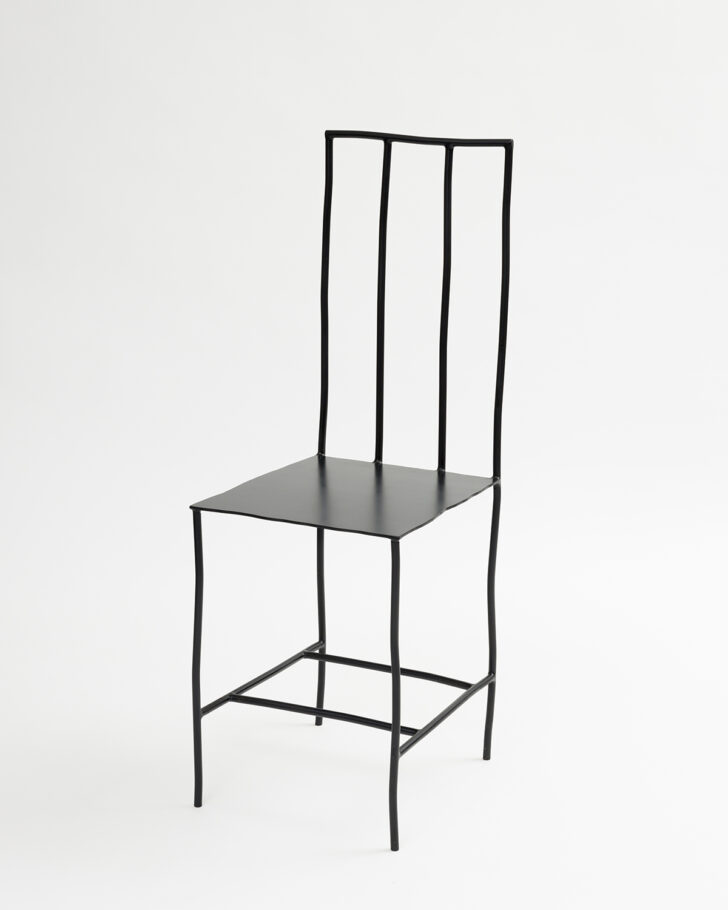
© Magen H Gallery
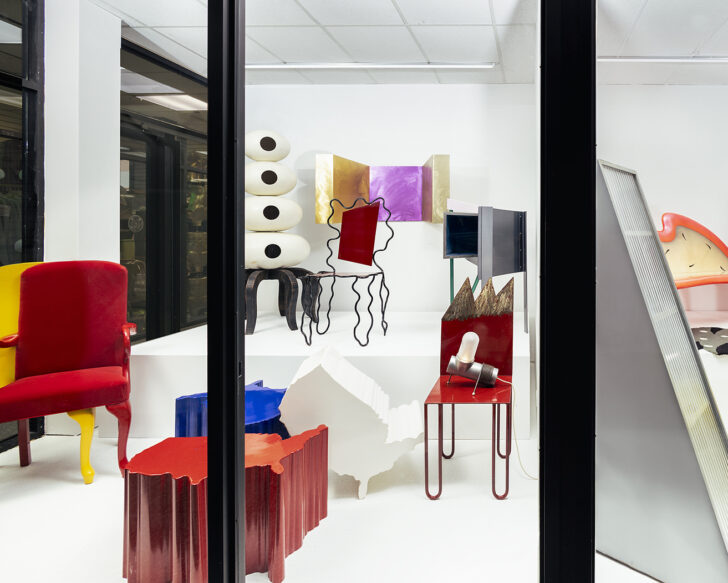
It’s a respect for the object as a whole and what it expresses.
Yes, and for this tradition and for the role that chairs play as cultural objects. I wasn’t making disposable stuff.
Now that you’re primarily working in photography, are the same impulses and same concerns animating your work or is it different?
I think it is the same. The reason I do it is the same. Sitting in front of my computer, manipulating photos with Photoshop, I do it because it’s interesting. And I know I’m done when I can’t think of anything else interesting to do to them. That’s the same. There are differences because it’s much faster. One of the reasons I used to like to make furniture out of welded steel as opposed to wood was that it was fast. Once you know what you’re trying to do, cutting the steel is quick, a matter of an hour or two to make a chair. It’s not finished but you can stand back and say this is it, I’ve got it. Woodworking is this slow, laborious, weeks and weeks go by – I’m gonna die before this chair [is done]! Can I move on please? The steel thing is immediate.
When I’d make the first sketch freehand, there was a spontaneity to that drawing that I could retain when I worked in steel. The steel rods, the black steel pieces, are very much like sketches in space. That’s their genesis. When I’d sketch a chair, I didn’t want a perfected version of that, of straight lines. The wavy lines and the rhythm that gets interrupted or carried through by the black plate seats and backs, that comes right out of the drawings. Capturing a version of that was uppermost in my mind. I wanted a chair that moved. The speed of assembly was part of that. You can’t do that effectively if it’s gonna take six weeks to shape up. You can do that if you are standing there with a cheap material — steel was pennies — then you can just go, no this is wrong, and start over again without breaking your heart.
That had to do with how I worked and why I worked and that is the same in photography. The process itself is not so time consuming. The time gets spent figuring out what I want to do. I never just go out carrying a camera. I don’t just keep one in my car. I only reach for a camera when I know what it is I’m trying to do. Then I’ll go hunting for that appropriate object or subject to shoot. I never just wander around and think, oh that would be a cool photograph, click. That doesn’t interest me at all because that’s me reacting to what I find. I’m interested in me deciding what I’d like to talk about and then making that.
That does sound similar to your approach to making furniture.
It does, doesn’t it? It’s why I don’t just walk into a workshop and start gluing stuff together. It’s a very similar mindset. My approach is the same, whatever it is that I’m trying to do. In the end, my deep, profound, pompous message is that that’s the same, too. That hasn’t changed. [Laughs].
It’s been such a pleasure talking with you. One more question, do you ever get the urge again to make furniture?
I’d like to make a sundial, and I’d like to make a fountain. And a birdbath. What I have in mind is really traditional, refinement in the proportions, very classical ideas, and I have the perfect environment for them, I have fifteen acres. But I need to find just the right fabricators. I don’t know if you can even call those pieces of furniture. Unless you’re a sparrow, they’re not all that functional.
